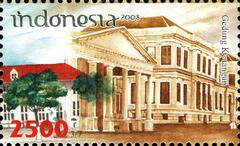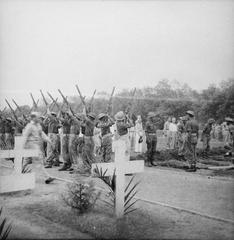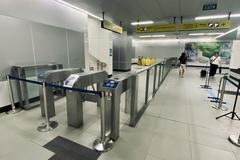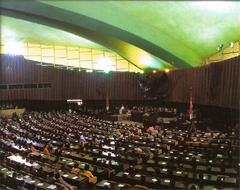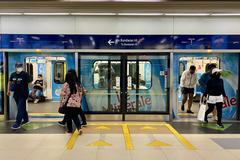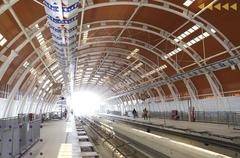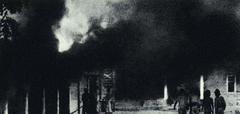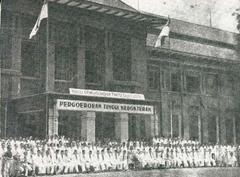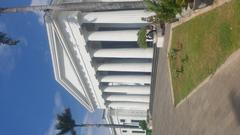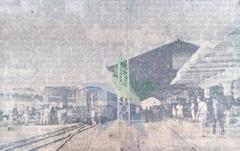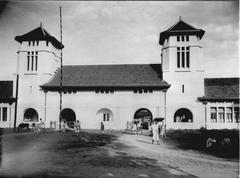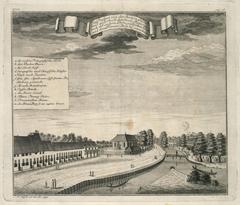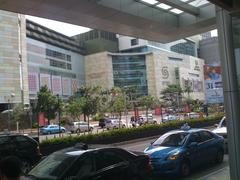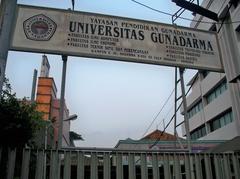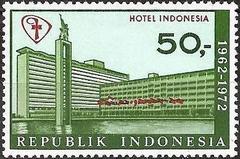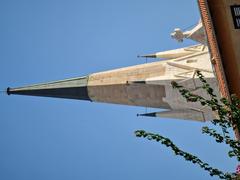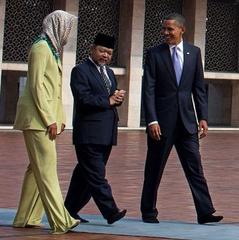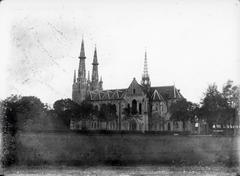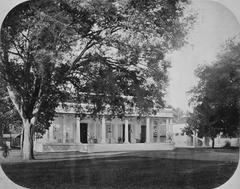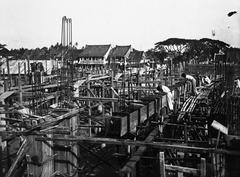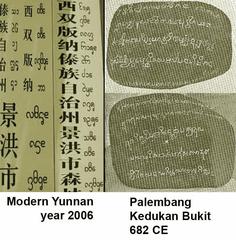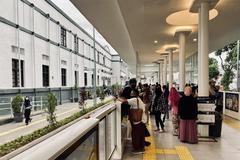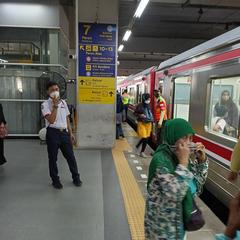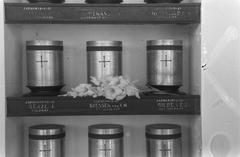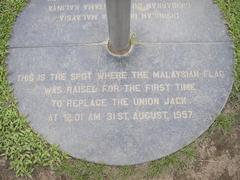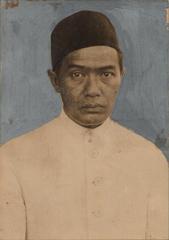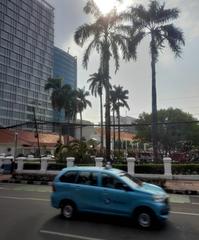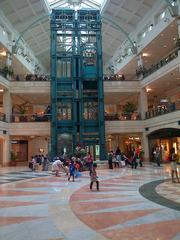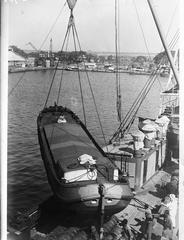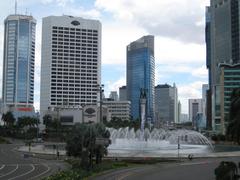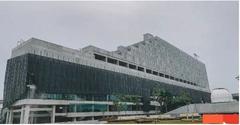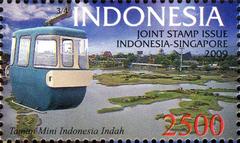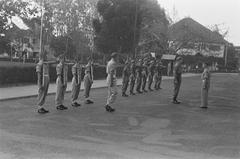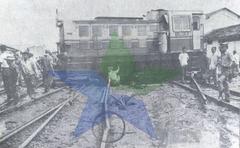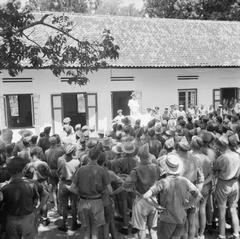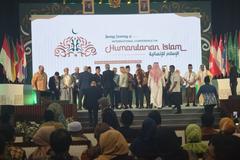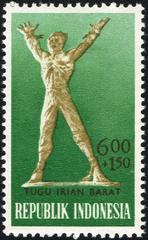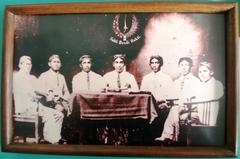
National Archives Building Jakarta: Visiting Hours, Tickets, and Historical Sites Guide
Date: 04/07/2025
Introduction
Nestled in the heart of Jakarta, the National Archives Building—locally known as Gedung Arsip Nasional Republik Indonesia (ANRI)—stands as a distinguished emblem of Indonesia’s complex and layered history. Originally constructed in the late 18th century as the residence of Governor-General Reinier de Klerk, this Dutch colonial architectural masterpiece offers visitors a window into the colonial era through its neoclassical design, curated exhibitions, and invaluable archival collections. The building not only showcases the aesthetic sensibilities of the Dutch East Indies but also serves as a living museum and repository of Indonesia’s heritage, including the globally significant Dutch East India Company (VOC) archives. This guide provides comprehensive information for travelers and history enthusiasts, covering the building’s architectural significance, archival collections, visiting hours, ticketing, accessibility, nearby landmarks, and practical tips to maximize your visit (Kompas Travel; Wikipedia; Holidify).
Table of Contents
- Introduction
- Architectural and Cultural Significance
- Archival Collections
- Exhibitions and Public Programs
- Visitor Information
- Getting There and Nearby Attractions
- Events and Community Use
- Frequently Asked Questions (FAQ)
- Visuals and Media
- Conclusion
- References
Architectural and Cultural Significance
Dutch Colonial Heritage and Architectural Features
The National Archives Building is a prominent example of Dutch colonial architecture in Jakarta, reflecting the city’s colonial past. Built in the late 18th century as the private residence of Governor-General Reinier de Klerk, the building features a symmetrical layout, high ceilings, thick masonry walls, and large shuttered windows designed for optimal ventilation in Jakarta’s tropical climate. The facade is adorned with a grand portico and Doric columns, characteristic of the neoclassical style favored by Dutch architects in Batavia (present-day Jakarta) (EAA Architecture Guide).
Two flanking pavilions, originally used as service quarters and guest accommodations, frame the main building and are arranged around a central courtyard—a hallmark of colonial residences that facilitated privacy and social gatherings.
Adaptive Reuse and Historical Layers
Over the centuries, the building has served multiple functions, reflecting the evolving political and social landscape of Jakarta. From private residence, it became property of de Klerk’s bodyguard, then later a Chinese-Indonesian community group, and finally, the office of the Dutch East Indies’ archives. Its transformation into a public archive and museum underscores its enduring significance as a site of memory and governance (Kompas Travel).
Cultural Symbolism
Beyond its architectural value, the National Archives Building symbolizes Indonesia’s multicultural heritage and journey toward nationhood. The building’s layered history—spanning Dutch, Chinese-Indonesian, and Indonesian stewardship—mirrors Jakarta’s own multicultural identity. Its conversion into a public archive marks the reclaiming of colonial spaces for national purposes.
Exhibitions inside, including dioramas dedicated to President Soekarno, contextualize Indonesia’s path to independence and ongoing efforts to interpret its own history (Kompas Travel).
Archival Collections
Historical Scope
The National Archives of Indonesia (ANRI) in Jakarta holds one of Southeast Asia’s most important archival collections, tracing its origins to the Dutch colonial era. Established as the Landarchief in 1892, the institution was tasked with managing the Dutch administration’s extensive documentary legacy (VOI; Wikipedia). The collections span several centuries and include records from the Dutch East India Company (VOC), colonial and post-colonial governments, the British interregnum, and the Japanese occupation.
VOC Archives
A highlight of ANRI’s holdings is the archive of the Dutch East India Company (VOC)—the largest VOC archive outside the Netherlands. Recognized by UNESCO’s Memory of the World Register in 2003, the VOC archives include:
- Official correspondence between Batavia and the Netherlands
- Shipping logs, trade records, and maps
- Architectural drawings of forts and trading posts
- Legal documents, treaties, and court records
- Personal papers of VOC officials
These materials shed light on the economic, political, and social dynamics of the colonial era (Wikipedia).
Colonial and Post-Colonial Records
The archives also contain:
- Gubernatorial decrees, correspondence, and administrative reports
- Population registers, tax records, and census data
- Judicial, police, and education records
- Post-independence government documents, chronicling Indonesia’s transition to sovereignty
Special Collections
Other notable collections include:
- Manuscripts and rare books
- Photographic archives documenting urban development and daily life
- Maps from the 17th to 20th centuries
- Personal and family archives, invaluable for genealogical research (VOI)
Preservation and Accessibility
The building has been adapted to preserve these materials in climate-controlled environments. Many documents are digitized for broader access, and researchers can consult collections in on-site reading rooms, with some materials requiring special permission (Wikipedia).
Exhibitions and Public Programs
Permanent and Rotating Displays
The National Archives Building hosts permanent displays on VOC heritage and colonial administration, featuring original documents, maps, and artifacts. Temporary exhibitions mark significant anniversaries and explore themes such as the Japanese occupation, independence, and multicultural heritage. Collaborative exhibitions with international institutions are also periodically held.
Educational Programs
Guided tours, workshops, and lectures are available for students, researchers, and tourists. Hands-on activities like document handling and archival research techniques are regularly offered.
Digital Access
Virtual exhibitions and digital catalogues allow global audiences to explore selected collections remotely (Wikipedia).
Visitor Information
Location and Access
- Address: Jalan Gajah Mada No. 111, West Jakarta, Indonesia
- Public Transportation: Accessible via TransJakarta bus (Halte Mangga Besar) and Jakarta Kota railway station. Taxis and ride-hailing apps like Gojek or Grab are convenient alternatives.
Visiting Hours and Tickets
- Open: Monday to Friday, 8:00 AM – 4:00 PM
- Closed: Weekends and public holidays
- Admission: Free for general visitors. Donations are appreciated for building maintenance. Researchers may need to register for special access (Holidify).
Accessibility and Facilities
- The building and gardens are mostly accessible to visitors with limited mobility, though some areas have steps or uneven floors.
- Restrooms and shaded seating are available in the garden.
- Assistance for visitors with special needs is available upon request.
- Photography is allowed in most areas; flash may be restricted in some exhibits.
Travel Tips
- Visit in the morning for a quieter experience and cooler temperatures.
- Wear comfortable shoes and modest clothing.
- Check for private events, as some areas may be closed during functions.
- Use translation apps if needed, as signage is primarily in Indonesian.
Getting There and Nearby Attractions
The National Archives Building is part of West Jakarta’s vibrant heritage landscape. Nearby attractions include:
- Jakarta History Museum (Museum Fatahillah)
- Fine Arts and Ceramics Museum
- Istiqlal Mosque
- Kota Tua (Jakarta Old Town)
- National Museum of Indonesia
These sites can be combined for a rich cultural itinerary (TravelSetu).
Events and Community Use
The building serves as a venue for exhibitions, art shows, weddings, and corporate events. Its gardens are a cherished public space for relaxation and gatherings. Due to private events, some areas may occasionally be closed to the public—check the schedule in advance.
Frequently Asked Questions (FAQ)
Q: What are the National Archives Building’s visiting hours?
A: Monday to Friday, 8:00 AM – 4:00 PM. Closed on weekends and public holidays.
Q: Is there an entrance fee?
A: General admission is free, but donations are welcomed.
Q: Are guided tours available?
A: Yes; arrange in advance with the archives or managing foundation.
Q: Is the building wheelchair accessible?
A: Most areas are accessible, but some steps and uneven surfaces exist due to the building’s age.
Q: Can I take photos inside?
A: Photography is generally permitted; be respectful during events or when other guests are present.
Q: Where can I find more information?
A: Visit the official ANRI website or Holidify.
Visuals and Media
Enhance your visit by exploring official photos and virtual tours on the National Archives Building’s website or reputable travel platforms. Look for images of the Dutch Indies architecture, period interiors, and tranquil gardens for inspiration and context.
Conclusion
The National Archives Building (Gedung Arsip Nasional) is much more than a preserved colonial mansion—it is a living testament to Indonesia’s diverse history and national identity. Its Dutch colonial architecture, world-renowned VOC archives, and community engagement make it an essential destination for tourists, scholars, and locals. Plan your visit to enjoy history, culture, and serene gardens in one of Jakarta’s most remarkable heritage sites. For updates on hours, exhibitions, and events, consult the official website and download the Audiala app for curated guides and exclusive content (EAA Architecture Guide; VOI; Holidify).
References
- Kompas Travel Guide, 2024
- Wikipedia, National Archives of Indonesia
- EAA Architecture Guide, 2024
- Holidify, National Archives Building Jakarta
- VOI, 2024
- Wikipedia, National Archives Building, Jakarta
- TravelSetu, Jakarta Tourism Guide
- Ekaputrawisata, Is Jakarta Safe to Visit?
- Official ANRI Website








